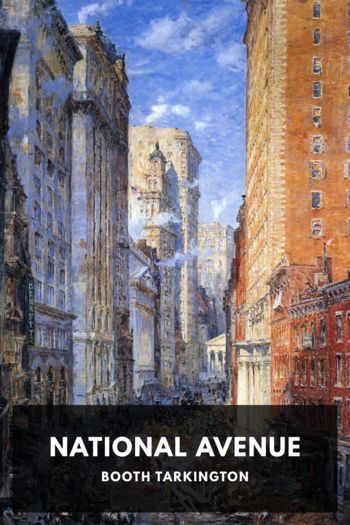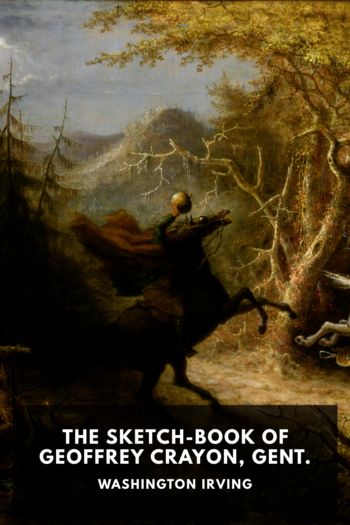Enchanted Evenings:The Broadway Musical from 'Show Boat' to Sondheim and Lloyd Webber by Block, Geoffrey (good story books to read .TXT) 📕

Read free book «Enchanted Evenings:The Broadway Musical from 'Show Boat' to Sondheim and Lloyd Webber by Block, Geoffrey (good story books to read .TXT) 📕» - read online or download for free at americanlibrarybooks.com
Read book online «Enchanted Evenings:The Broadway Musical from 'Show Boat' to Sondheim and Lloyd Webber by Block, Geoffrey (good story books to read .TXT) 📕». Author - Block, Geoffrey
2. For an extended discussion of the difficult collaboration and a more positive appraisal of Waltz, see Geoffrey Block, Richard Rodgers, 213–25.
3. Thomas P. Adler, “The Musical Dramas of Stephen Sondheim,” 513–25; quotation on 523.
4. Eugene K. Bristow and J. Kevin Butler, “Company, About Face!,” 241–54; quotation on 253.
5. See Stephen Banfield, Sondheim’s Broadway Musicals, 20–25, and Stephen Sondheim, “Theater Lyrics,” 62–63.
6. Oscar Hammerstein II, “Notes on Lyrics,” 3–48.
7. Ibid., 4.
8. Ibid., 15.
9. Ibid.
10. Ibid., 19.
11. Ibid., 21.
12. Ibid., 22.
13. Ibid., 23.
14. Ibid., 34.
15. Although work on By George was begun in the spring of 1945, the show remained largely dormant until the following spring (around the time of Sondheim’s sixteenth birthday on March 22). It is possible that Hammerstein’s famous shredding of Sondheim’s work occurred later than usually reported. In any event, By George was first performed in May 1946.
16. Sondheim, “Theater Lyrics,” 62.
17. Hammerstein, “Notes on Lyrics, 45–46; Sondheim, “Theater Lyrics,” 65–66. Hammerstein’s point is well taken, but if he had been a Civil War buff he might have known that hot air balloons developed by France in the eighteenth century made it possible to use this technology for reconnaissance several decades before the French gave the United States its beloved statue.
18. From the third show, Mary Poppins, based on the stories by P. L. Travers, Sondheim discovered the difficulties of libretto writing (Hammerstein customarily wrote the librettos as well as the lyrics). In “Theater Lyrics” Sondheim recalls that he sent Hammerstein a script for the fourth, original musical that included a ninety-nine-page first act and that Hammerstein circled this impressive number and wrote “Wow” (“Theater Lyrics,” 63).
19. The title Phinney’s Rainbow incorporated allusions to Finian’s Rainbow, a popular musical of 1947 with lyrics by E. Y. Harburg and music by Burton Lane and to the president of Williams at the time, James Phinney Baxter.
20. Steven Suskin lists three stagings of Saturday Night: a reading by the Bridewell Theater Company in 1995; a small production, also in London, in 1997; and a production by the Pegasus Players in Chicago in 1999 with two new songs (Suskin, Show Tunes, 274–75). The show received its New York premiere on February 17, 2000. A cast recording was released that same year on Nonesuch 79609–2.
21. Sondheim, “Theater Lyrics,” 64.
22. Ibid., 70.
23. Ibid., 70–71.
24. Ibid., 71.
25. Hammerstein, “In Re ‘Oklahoma!,’” 11.
26. Babbitt’s encyclopedic knowledge of popular music of the 1920s and 1930s and his aborted aspirations to composing popular music in the 1940s are less widely known. For those familiar with the breadth of his interests it is not surprising that in addition to teaching the European classics, Babbitt would also analyze the popular songs of DeSylva, Brown, and Henderson, Kern, Rodgers, and Gershwin “with exactly the same serious tone.” See Eugene R. Hubert, ed., “A Conversation with Stephen Sondheim” (typescript), quoted in Banfield, Sondheim’s Broadway Musicals, 22.
27. Gordon, Art Isn’t Easy, 7. See also Steven Swayne, How Sondheim Found His Sound, 257–59, and Block, “Integration,” forthcoming.
28. Sondheim remarked in an interview that “Moss Hart did a concept musical. His Thousands Cheer was a concept musical in 1933. Concept musicals have existed forever.” Quoted in Ilson, 195. For an application of the “ideal type” to the Broadway musical, see Block, “The Broadway Canon,” 537–39 and note 15.
29. See Foster Hirsch, Harold Prince, and Carol Ilson, Harold Prince.
30. The use of the concept musical on behalf of the integrated ideal is analogous to the practice of classical modernists (for example, Schoenberg and later Sondheim’s teacher Babbitt), who offered increasingly complex exhibitions of motivic unity to generate new heights in organicism.
31. Prince, Contradictions, 231. Ethan Mordden’s take on whether Follies should be considered a failure is worth quoting: “Obviously, in days of lower costs, a hit made money and a flop lost money. But by 1971, hits lost money. No show that wins Follies’ awards and runs over a year and eventually gets four major recordings, all the while becoming a classic by any standard of measurement, can be called a failure” (Mordden, One More Kiss, 40). Twenty years later, Lloyd Webber’s Sunset Boulevard, another relatively long-running, award-winning hit, managed to lose $25 million.
32. In his informative Everything Was Possible, Ted Chapin includes the Newsweek design that featured Follies on the cover. The caption reads: “Both Time and Newsweek were planning to do cover stories of the show. However, they never liked to run the same ‘soft’-news covers, so when Time went forward with theirs, Newsweek canceled, but not before this cover was designed” (Chapin, second page of photo inserts between 144 and 145).
33. Considering the alleged absence of song hits, one cannot help but be struck by the frequency and popularity of revues and other retrospectives based on Sondheim songs, especially Side by Side by Sondheim (1976) and Putting It Together (1993).
34. Sondheim (with Prince), “Author and Director” (published in 1985), 357.
35. Sondheim, “Larger than Life: Reflections on Melodrama and Sweeney Todd,” 3.
36. Ibid., 6.
37. Ibid.
38. Ibid.
39. Ibid., 10.
40. Ibid., 11.
41. Mark Horowitz, Sondheim on Music, 155.
42. Ibid., 155.
43. Banfield, Sondheim’s Broadway Musicals, 290.
44. Ibid., 291.
45. Sondheim, “Interview with Stephen Sondheim,” 1988, 229.
46. Sondheim, “Larger than Life: Reflections on Melodrama and Sweeney Todd,” 10–11.
47. Craig Zadan, Sondheim & Co., 246.
48. Sondheim, “The Art of the Musical,” 274. Banfield points out that the chord Sondheim labeled as his “Sweeney chord” (a minor seventh with the seventh in the bass, C-D-F-A) and which appears only rarely in the score—for example, the last chord of the Judge’s version of “Johanna”—is in any event not the same as the Hanover Square chord (a diminished triad with an added major seventh, spelled as a diminished octave, G-B-D-G) (Banfield, 305–7).
49. Sondheim (with Prince), “Author and Director,” 365.
50. Zadan, Sondheim & Co., 248.
51. In Sondheim’s “defense,” the version of the organ





Comments (0)